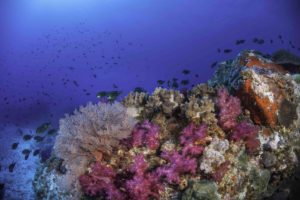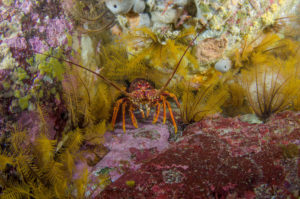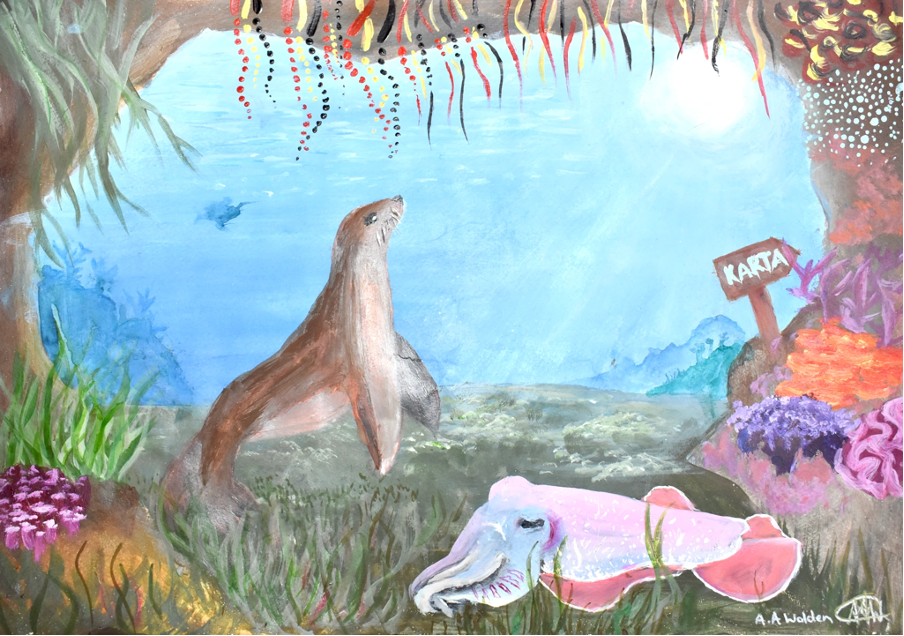Dangers are lurking beneath the sea, but its not what you think. Our marine life may be out of sight, but it does not mean it is out of trouble.
The majority of Australian shallow-reef species experienced steep population declines between 2008 and 2021, reports a study published in Nature this week. This trend, although not seen across all species, suggests that greater conservation efforts are required to safeguard marine ecosystems from climate change. A team of Australian marine ecologists, including Dr Camille Mellin of the Environment Institute and divers, made this study possible.

One spot pullers (Chromis hypselepis) dance over the colourful coft corals. Photo credit: Antonia Cooper
Detailed monitoring of species populations is needed to understand changes in biodiversity and implement effective conservation strategies. Tracking species fluctuations in marine ecosystems has been particularly challenging as population changes are hidden below the surface of the ocean, and are thus much harder to observe.
Graham Edgar and colleagues conducted an extensive assessment of marine species population trends, combining the efforts of three of the world’s longest-running reef-monitoring programmes (the Reef Life Survey, the Australian Temperate Reef Collaboration and the Australian Institute of Marine Sciences’ Long Term Monitoring Program). These studies include 26.4 million individual observations of 4,009 taxa of marine fish, mobile invertebrates (such as crabs), coral and seaweeds. Data was collected from 3,075 sites around Australia between 1992-2021.
Between 2008 and 2021, this study reported a population decline in 57% of the 1,057 surveyed species, with 28% of all observed species declining by more than 30%. This included 9 coral, 36 invertebrate, 34 seaweed and 227 vertebrate species. The researchers also measured the effect of heatwaves on species populations, compared to a baseline of 2008 water temperatures. Populations of cool-temperate species in particular, were seen to decline following periods in which the water warmed by more than about 0.5 °C above 2008 levels.

Southern rock lobster (Jasus edwardsii). Photo credit: Antonia Cooper
The most threatened family of fishes worldwide are the handfishes, a group of 14 species restricted to southeastern Australia, primarily Tasmania. The Critically Endangered red handfish (Thymichthys politus) and spotted handfish (Brachionichthys hirsutus) have declined to tiny populations of around 100 (red) and 5000 (spotted) individuals living in shallow bays near Hobart. The smooth handfish (Sympterichthys unipennis) is thought to be extinct.
These findings can be used in an effort to protect these species from temperature fluctuations caused by human activity, a task that is essential to protect global biodiversity.
Importantly, this study demonstrates the enormous potential of citizen science monitoring programs for bringing ecological data out of the dark. The loss of most Australian marine species would otherwise likely occur unnoticed, as public funding does not generally support systematic monitoring of native plants and animals, regardless that biodiversity is the foundation for human well-being. Data provided by volunteer Reef Life Survey divers has provided the only population trend information for over 1,000 species, while tens of thousands of species still lack any information at all.
Lead image: Reef Life Survey divers in Port Phillip Bay, Victoria. Photo credit: Antonia Cooper






